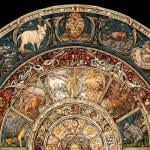This is the ninth post in a series titled: Earthquakes… Signs of the Times? I invite you to read the rest of the series here to catch up (the first post would be extremely helpful)…
——————————————————————–
So far we have examined some “big picture” themes from Mark 13. Our next step is to attempt to place the text within context of the canon of Scripture. In regards to issues of meaning, we made an interpretive decision to give the whole of the chapter to pertaining to the events leading up to the destruction of the Temple. Often, this Mark 13 is viewed as ‘signs of the times’—the “end times”—so disasters in our day (i.e. Haitian earthquake) are easily mistaken for indications that the so-called rapture and Tribulation are near. Having deconstructed the ability to attribute the text to futurist views, the question alluded to above remains: If this passage does not speak of the end and the second coming of Christ, are we still able to speak of his second advent with confidence? In order to answer this question, we need to look at the biblical narrative for clues to how this all fits together.
The bible is a story that is moving from creation to new creation. And just because Mark 13 does not speak of the “second coming,” that does not mean that the narrative of Scripture does not move in that direction. This remains true even if one chooses to embrace the view that Jesus never spoke directly of his “second coming” during his earthly ministry.[1] In Luke’s second volume, after Jesus ascends into heaven, the angel informs the disciples that he “who has been taken from you into heaven, will come back in the same way you have seen him go into heaven” (Acts 1.10). So, the belief in the second coming was clearly there, but notice that the angel declares it only after Jesus has ascended.
There is a key text that deserves some attention that will help us understand this concept a bit more. It is the famous passage in 1 Thessalonians 4.16-17 which reads:
For the Lord himself will come down from heaven, with a loud command, with the voice of the archangel and with the trumpet call of God, and the dead in Christ will rise first. After that, we who are still alive and are left will be caught up together with them in the clouds to meet the Lord in the air. And so we will be with the Lord forever.
Briefly, let’s look at this text that has some resemblances to the words of Jesus in Mark 13. In this passage, Paul borrows specific images from the Old Testament that would have been familiar to Jewish converts and Gentiles who were familiarizing themselves with the Hebrew tradition. He also mixes his metaphors and includes first century imagery. Some images that Paul employs are that of Moses coming down from Mount Sinai with the Law, and that of a visiting emperor. The image that is relevant to our discussion, is taken from Daniel 7 where the “one like a son of man coming with the clouds of heaven” and the community he represents is vindicated over the enemies of the people of God. The idea that was used to describe Jesus’ own vindication after the destruction of the Temple, in Paul is applied to Christians who are facing various forms of persecution. After a time of suffering, when Christ returns, Christians will be raised up above all the enemies of God on the “clouds” to be with him in the glory of a restored creation. This is not about being secretly raptured out of this world on literal clouds, but simply invokes the image of Daniel 7 and applies the literary devise to the Church.[2]
What this means is that as Christians, we still await the second coming of Jesus Christ who will restore all things in creation by resurrecting believers to eternal life, judging all evil, and uniting heaven and earth (Rev 21-22, Romans 8, etc.). This is an eschatological event described in Acts, 1 Thessalonians, and several other places that will be fulfilled in God’s own timetable. But, there is no reason to believe that this will be accompanied by a great Tribulation where an anti-Christ figure will wreak havoc on the planet. There is not room for this in the biblical narrative. The biblical story of God’s faithfulness to complete the creation project will be good news when it arrives, not the manifestation of cosmic chaos often attributed to Mark 13.
If this is indeed the case, how does this help the church to be a broker of hope in our culture rather than being “doom & gloom” prophets?
[1]. N. T. Wright, Surprised By Hope: Rethinking Heaven, The Resurrection, and The Mission of The Church(New York: HarperCollins Publishers, 2008), 125.
[2]. Ibid., 131-32.














